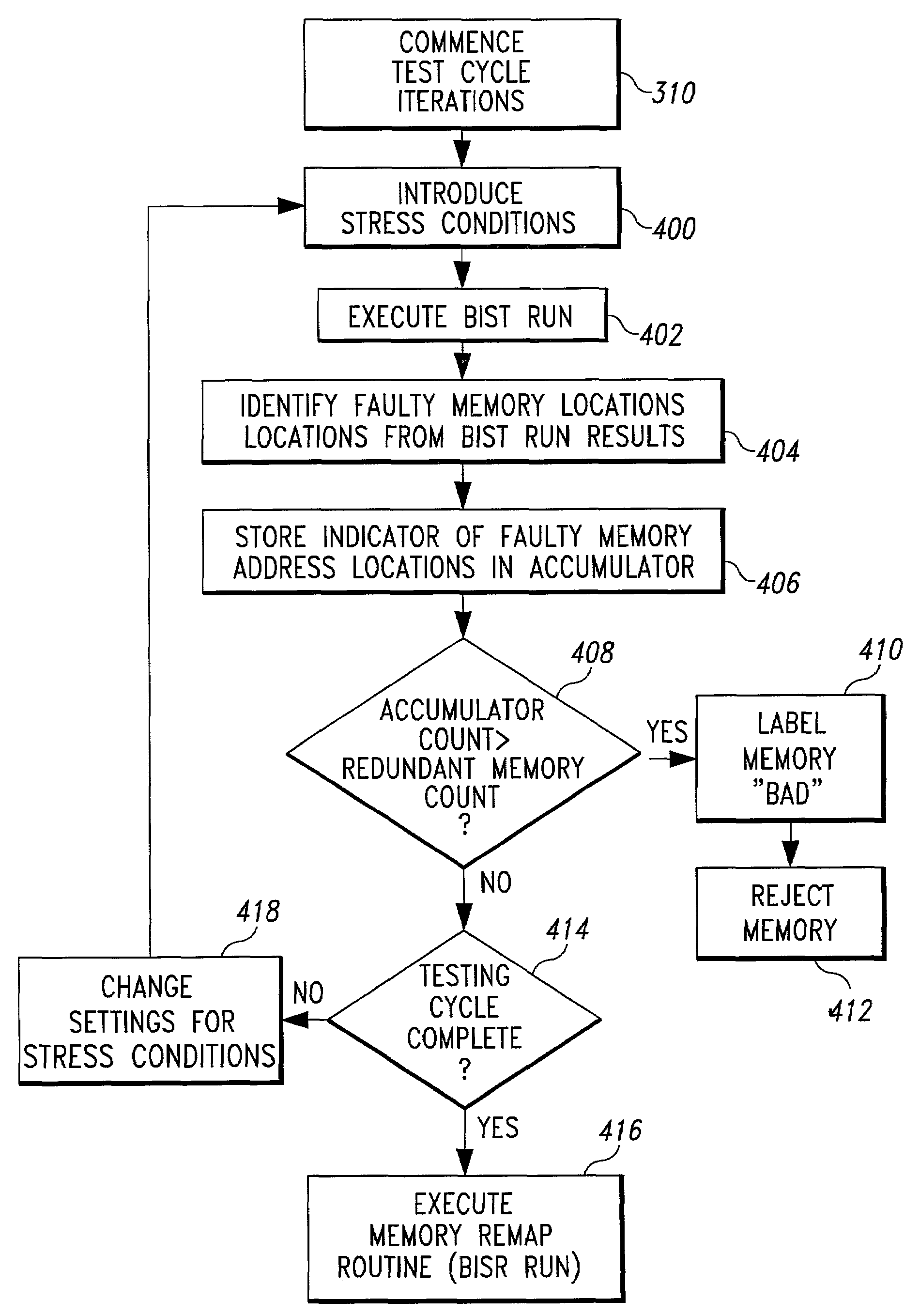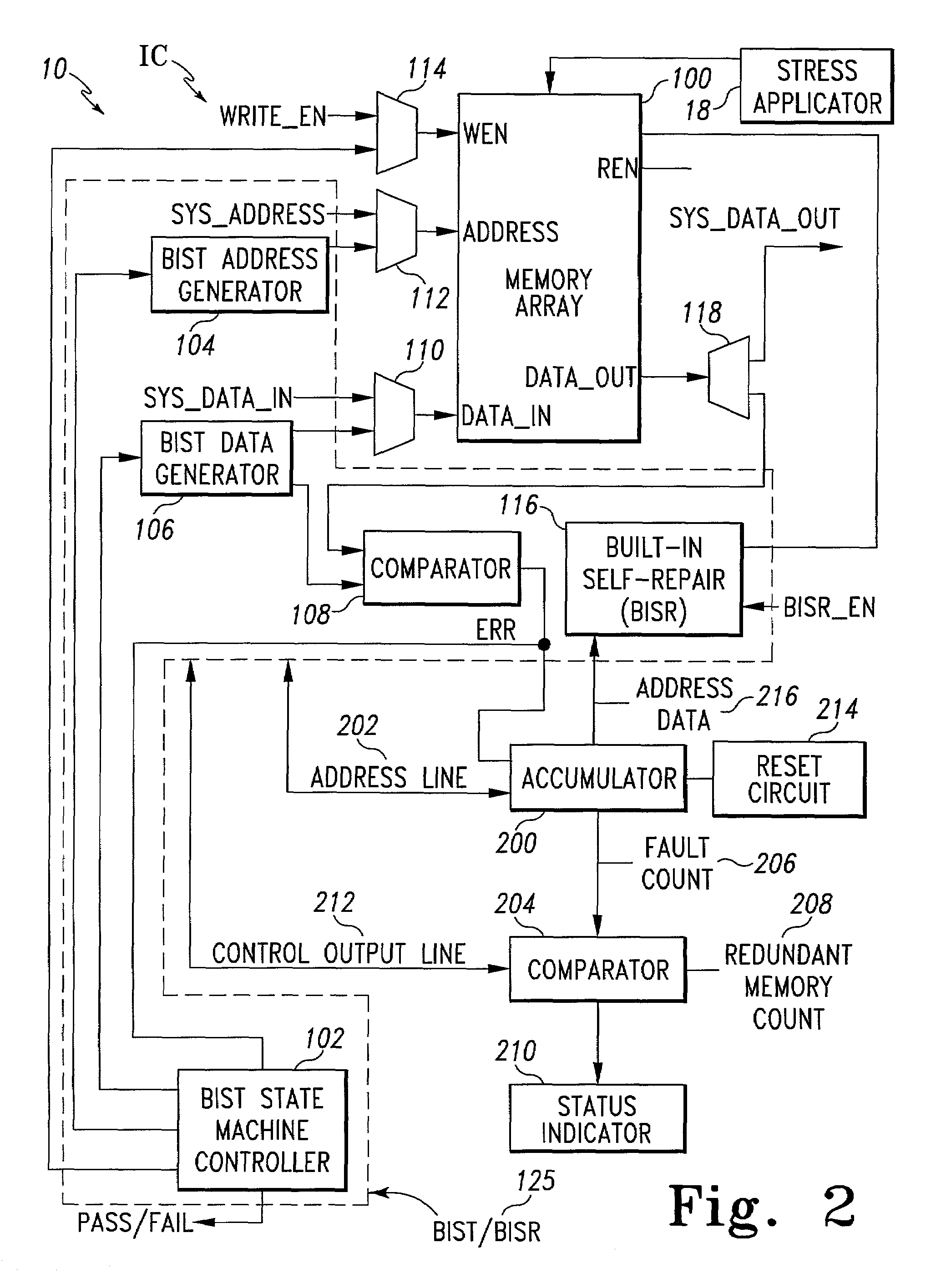Method and system for performing built-in self-test routines using an accumulator to store fault information
a self-testing and accumulator technology, applied in the field of integrated circuit die testing and repair, can solve the problems of high production cost, high production cost, and high cost of test development, and achieve the effect of improving yield
- Summary
- Abstract
- Description
- Claims
- Application Information
AI Technical Summary
Benefits of technology
Problems solved by technology
Method used
Image
Examples
Embodiment Construction
[0064]Referring now to the drawings and particularly to FIG. 1, there is shown a simplified block diagram representation of an integrated circuit (IC) assembly 10 for use in analyzing a memory array 12, according to one embodiment of the present invention. Preferably, IC assembly 10 is used in conjunction with a manufacturing test procedure conducted prior to delivery of the end user machine that incorporates memory array 12. More particularly, the test procedure is preferably performed at the wafer stage prior to singulation. IC assembly 10 finds particular use when memory array 12 is an embedded storage device.
[0065]Although IC assembly 10 is described in conjunction with memory array 12, this should not be seen in limitation of the present invention as it should be apparent that the present invention may be practiced with other devices that include, but are not limited to, computer-related modules, logic circuitry, electrical components, and other apparatus having any combination...
PUM
 Login to View More
Login to View More Abstract
Description
Claims
Application Information
 Login to View More
Login to View More - R&D
- Intellectual Property
- Life Sciences
- Materials
- Tech Scout
- Unparalleled Data Quality
- Higher Quality Content
- 60% Fewer Hallucinations
Browse by: Latest US Patents, China's latest patents, Technical Efficacy Thesaurus, Application Domain, Technology Topic, Popular Technical Reports.
© 2025 PatSnap. All rights reserved.Legal|Privacy policy|Modern Slavery Act Transparency Statement|Sitemap|About US| Contact US: help@patsnap.com



